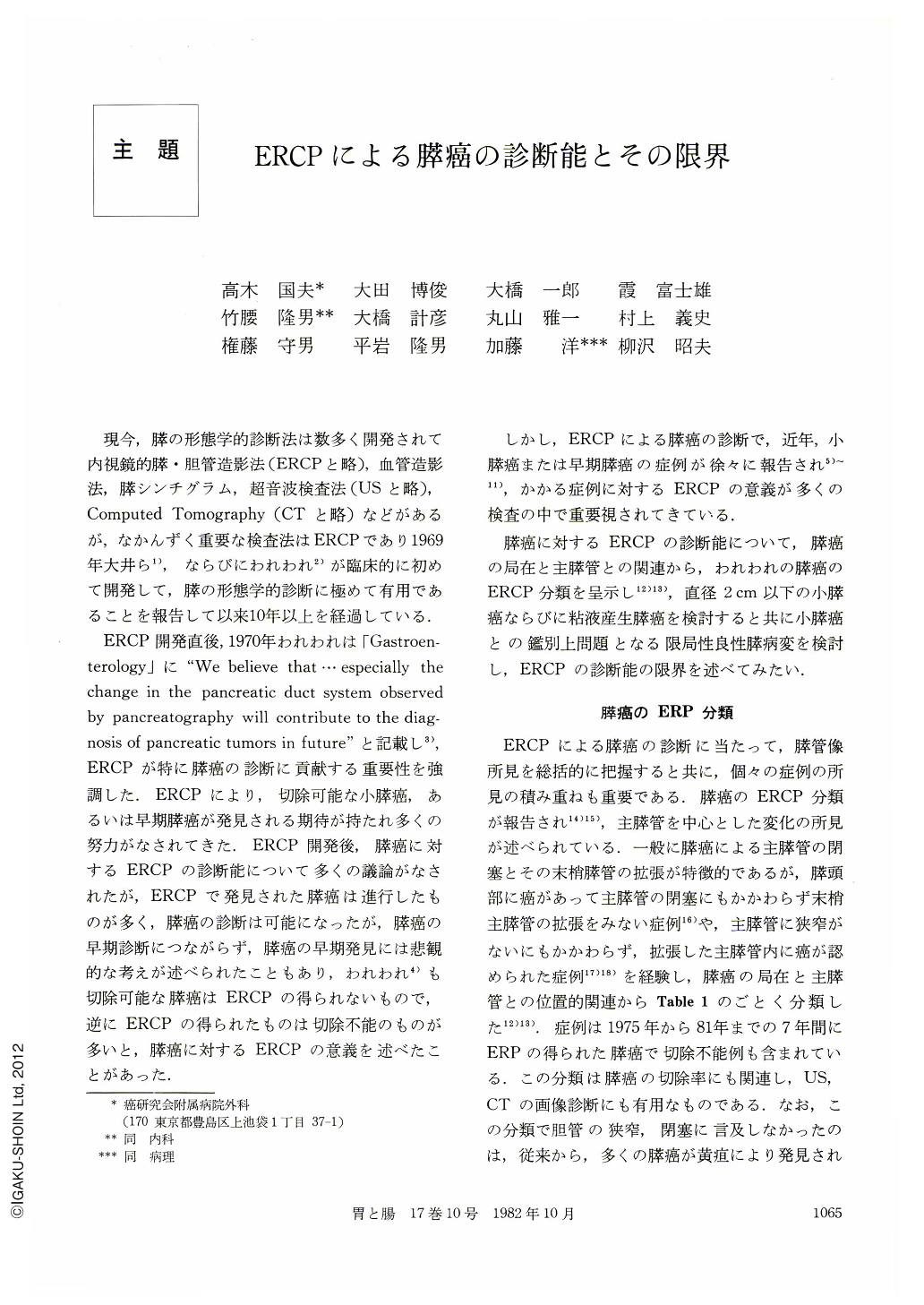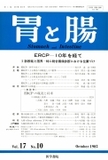Japanese
English
- 有料閲覧
- Abstract 文献概要
- 1ページ目 Look Inside
現今,膵の形態学的診断法は数多く開発されて内視鏡的膵・胆管造影法(ERCPと略),血管造影法,膵シンチグラム,超音波検査法(USと略),Computed Tomography(CTと略)などがあるが,なかんずく重要な検査法はERCPであり1969年大井ら1),ならびにわれわれ2)が臨床的に初めて開発して,膵の形態学的診断に極めて有用であることを報告して以来10年以上を経過している.
ERCP開発直後,1970年われわれは「Gastroenterology」に“We believe that…especially the change in the pancreatic duct system observed by pancreatography will contribute to the diagnosis of pancreatic tumors in future”と記載し3),ERCPが特に膵癌の診断に貢献する重要性を強調した.ERCPにより,切除可能な小膵癌,あるいは早期膵癌が発見される期待が持たれ多くの努力がなされてきた.ERCP開発後,膵癌に対するERCPの診断能について多くの議論がなされたが,ERCPで発見された膵癌は進行したものが多く,膵癌の診断は可能になったが,膵癌の早期診断につながらず,膵癌の早期発見には悲観的な考えが述べられたこともあり,われわれ4)のも切除可能な膵癌はERCPの得られないもので,逆にERCPの得られたものは切除不能のものが多いと,膵癌に対するERCPの意義を述べたことがあった.
ERCP has been clinically introduced for more than 10 years, we evaluated its diagnostic ability and limitation for pancreatic cancer. ERP was found to have significant impact for diagnosing pancreatic cancer and we proposed a classification of ERP findings of pancreatic cancer by analyzing its location and morphological change of the main pancreatic duct. Furthermore we showed the classification was quite useful for diagnostic imaging modalities such as US and CT.
Although advanced pancreatic cancer became easily diagnosed by ERP, angiography, US and CT, small intrapancreatic lesions are somewhat difficult to be diagnosed.
Analyzing three cases of small intrapancreatic loca-lized cancer which were less than 2 cm in diameter, we found that a diagnostic ability of ERCP for small intrapancreatic lesions was excellent if it affect the main pancreatic duct to be visualized by ERP as stenotic or obstructive lesions. However, there was a risk to miss lesions of the uncinate process where there is no change of main pancreatic duct and it was a limitation of ERP.
Furthermore, we analyzed five cases of localized benign lesions in which pancreatic cancer was suspected, and we found they were due to localized pancreatitis, ductal hyperplasia or atypical hyperplasia of the pancreatic duct. The intrapancreatic lesions, which showed stenosis of the main pancreatic duct, should be operated on and histological investigation should be carried out, even if it is quite difficult to differentiate benign from malignant one.
Among the pancreatic cancer, mucous-producing carcinoma, which is classified as type III by ERCP classification because of specific findings at the papilla of Vater, could be diagnosed by morphological change of the main pancreatic duct by ERP,US and CT. If we pay more attention to the characteristic findings of the specific type of pancreatic cancer, their discovery rate will be increased.

Copyright © 1982, Igaku-Shoin Ltd. All rights reserved.


